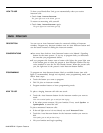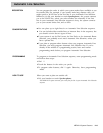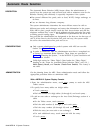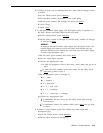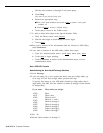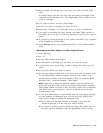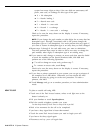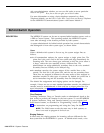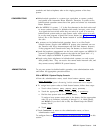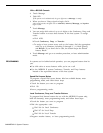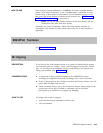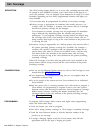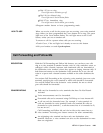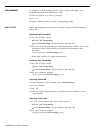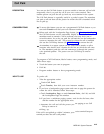
Ask your administrator whether you can use dial codes to access particular
lines or line pools.
If so, he or she can give you a list of codes.
For more information on using a basic telephone connected to a Basic
Telephone Module, see the User’s Guide: Basic Touch-Tone and Rotary Telephones
for the MERLIN II Communications System with Feature Module 2.
Behind-Switch Operation
DESCRIPTION
The MERLIN II system can be sent to operate behind another system, such as
a PBX or Centrex system. This operating module lets MERLIN II system
users take advantage of the features provided by both systems.
A system administered for behind-switch operation has several characteristics
that distinguish it from other system types, as shown below.
Lines
When a behind-switch system is first set up, the system assigns lines as
follows:
● At all nonattendant stations, the system assigns a single prime line. The
prime line is the user’s line in the host system and rings immediately for
incoming calls. The user always gets connected to this line (even when it
is busy), unless the user manually selects a different line. The
administrator can assign additional, secondary lines to the voice terminal.
Secondary lines are initially set for delayed ring.
● At attendant consoles, the system assigns all the outside lines to the
console. The first line is the prime line, and the rest are secondary lines.
These lines are assigned to buttons in the same order as lines assigned to
attendant consoles in other types of systems. By default, the prime line is
set for immediate ring and the secondary lines for delayed ring.
The default line assignments and ringing options can be changed. For
example, if there are two or more standard attendant consoles, the additional
consoles must be readministered so that each has a unique prime line. For
more information, see “Line Assignments in Behind-Switch Systems ‘r and
“Ringing Options” in this section.
Fixed Features
Touching Conference, Drop, or Transfer sends an administered signal to the
host switch to perform the function in the host system. To use the MERLIN
II system Conference, Drop, and Transfer features, you can program local
fixed feature buttons, as described in “Programming,” below. See “Camp
On” for instructions on programming and using the Camp On feature.
NOTE: The Hold button works the same way in both systems, so
there is no need to program it for local use.
Ringing Patterns
In most cases, the ringing patterns for incoming calls are different for the
host system that for the MERLIN 11 system.
In behind-switch mode, voice
2-20 MERLIN II System Features



